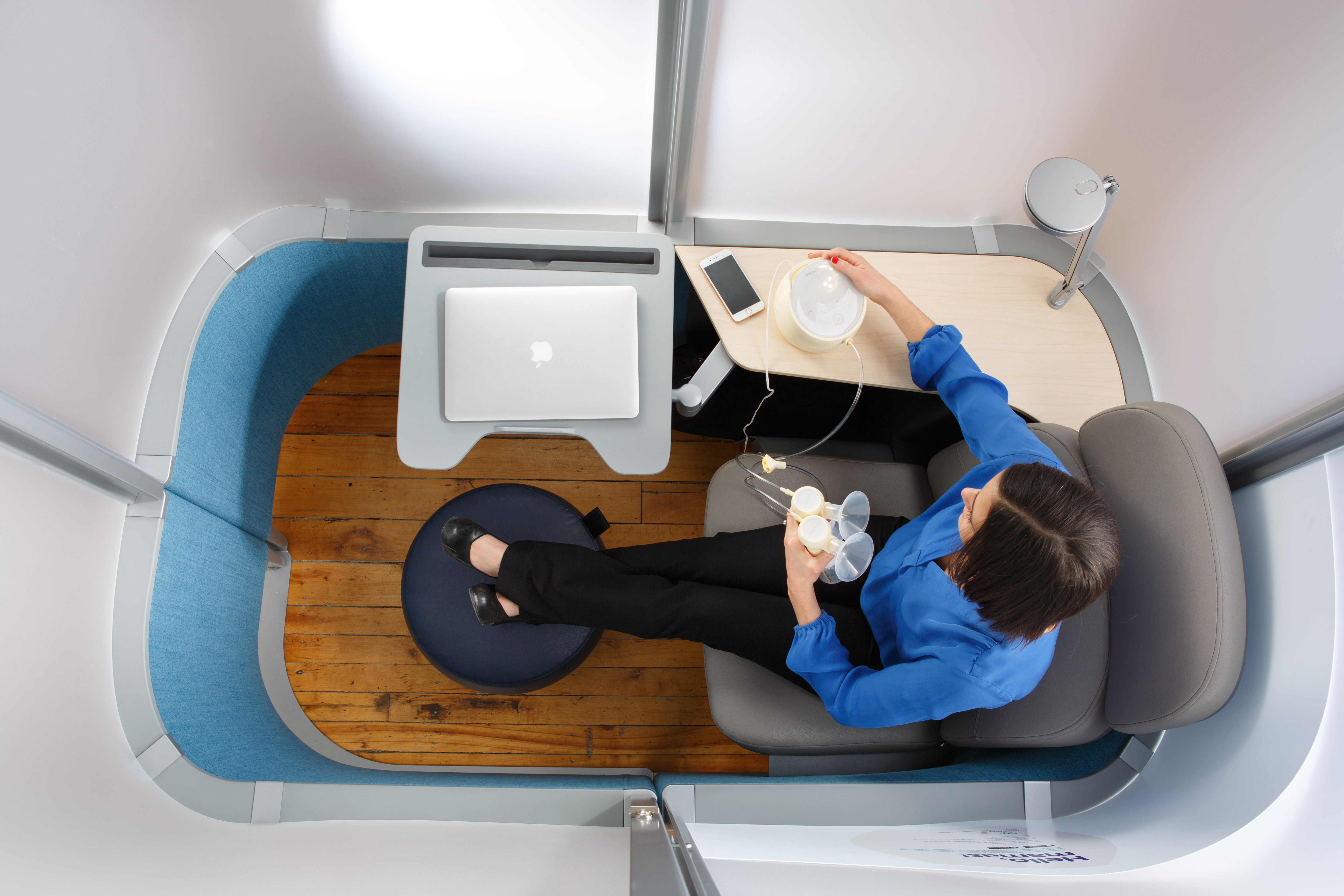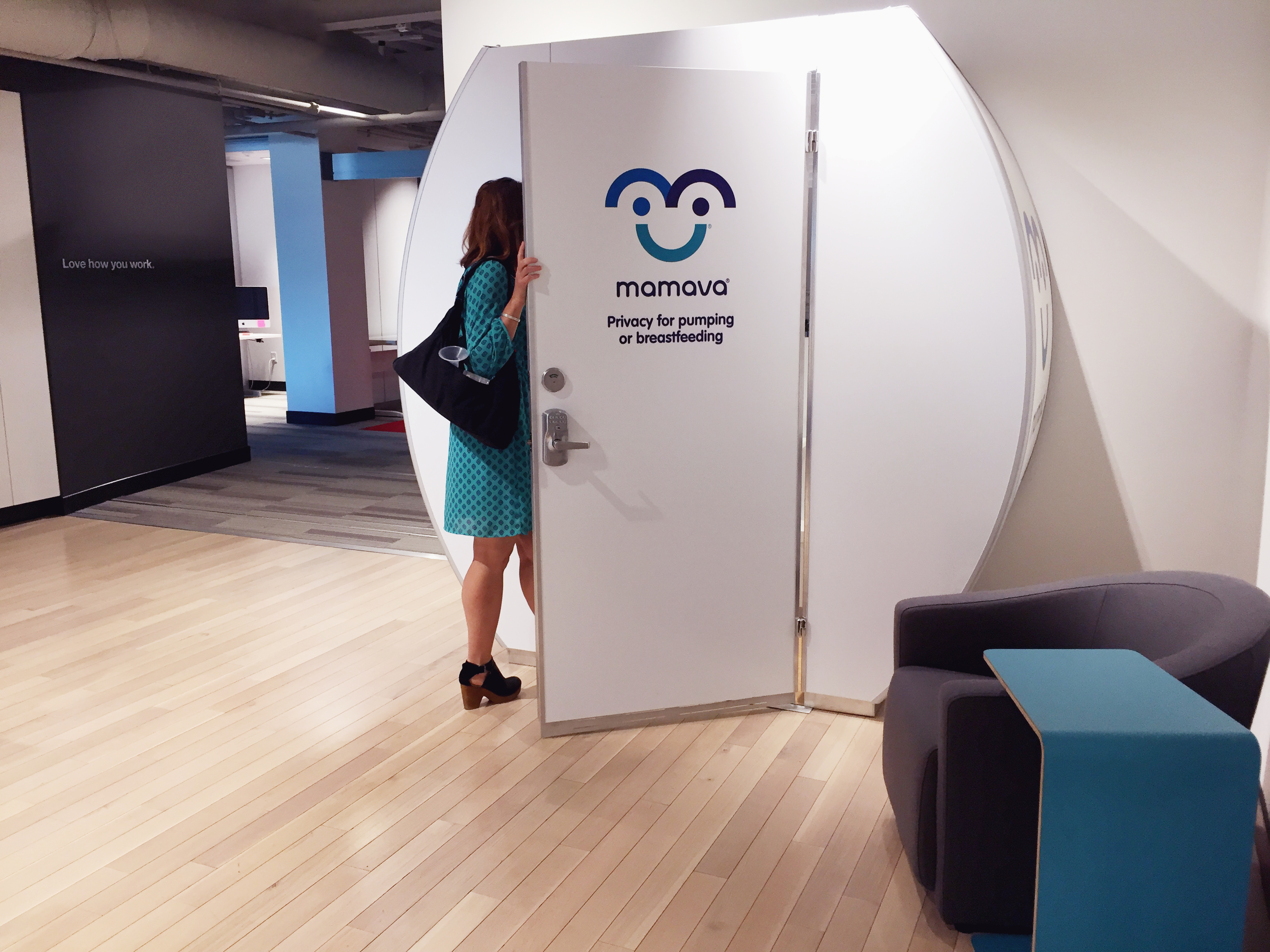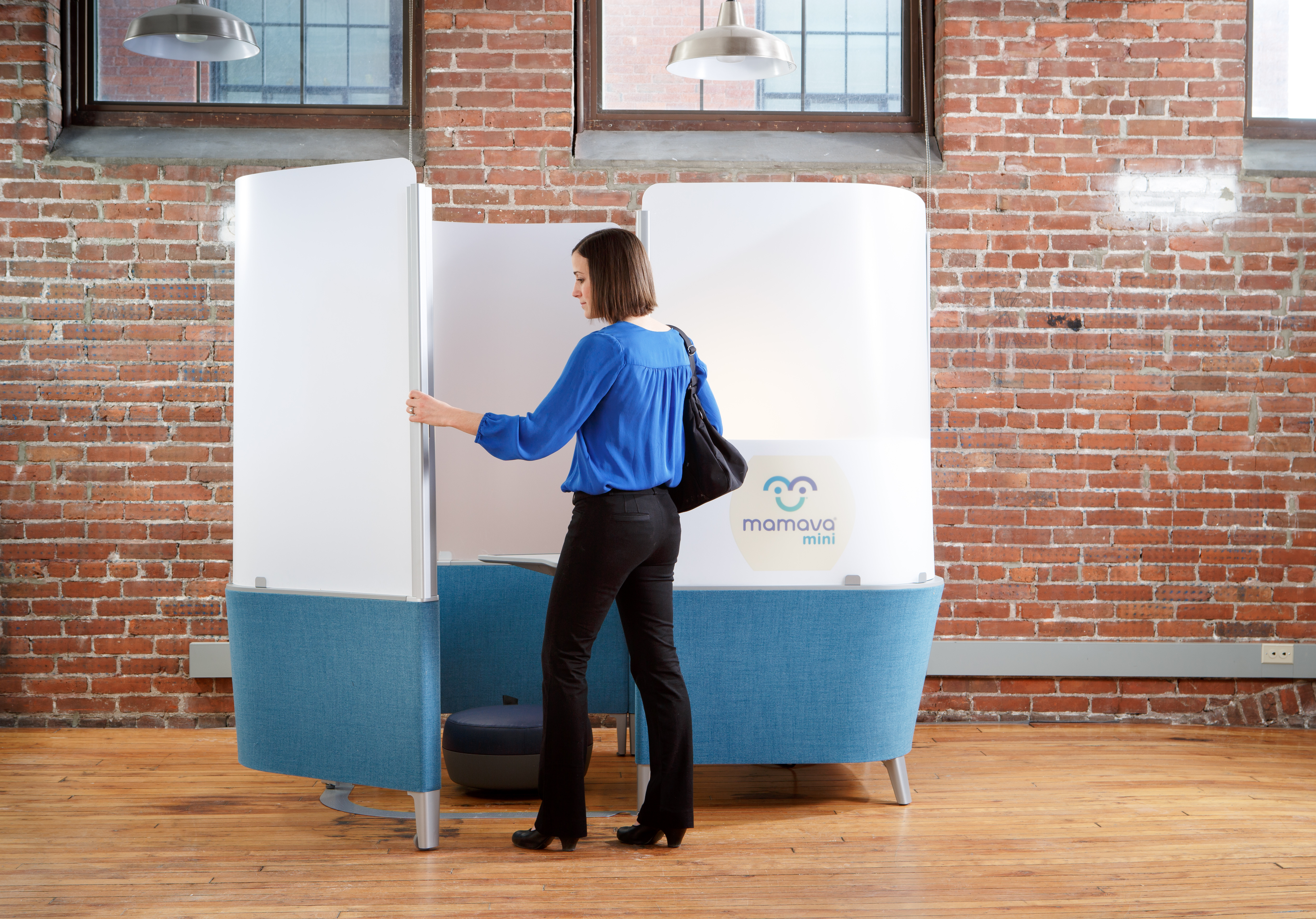
A note from our founder: It was less than a year ago that I gave birth to my baby girl. When I started looking for a new coworking space, I picked one with a phone booth that had a curtain, a small table, and a socket so that I could pump. The phone booth had no lock and the curtain did not cover me securely, so it was not an ideal solution for a breastfeeding mom like me. Unfortunately, too many workplaces still consider the bathroom or an empty conference room adequate for pumping. The good news is that companies like Mamava, who have intimate understanding of this unique need, are changing that. — Huibin Yu, Founder, Fohlio
When my babies were born, I was working as a brand strategy director and traveled a lot—to meet clients, attend trade shows, and conduct field research. My breast pump was my constant companion. Often the only private place for me to pump was in a restroom—a demoralizing, undignified, and unsanitary experience. After pumping in what seemed like millions of restrooms and borrowed spaces, I decided enough was enough.
My colleague and fellow mom, Christine Dodson, and I launched Mamava out of the graphic design studio where we worked. With the creative, problem-solving minds of our co-workers and mentor, and the studio’s generous resources, Mamava was born. A dozen years later, we’ve placed nearly 500 freestanding lactation suites all across the country.

For new moms returning to work, there may be no greater intersection of their personal lives and their professional identities than pumping breast milk. To maintain milk supply, breastfeeding women need to pump every few hours. And when lactation spaces aren’t designed around women’s needs, expressing milk at work can make for uncomfortable situations. If your goal is to provide thoughtful user-centered lactation spaces for working mothers, here are five key factors to consider.
1) Understand the essentials of a dignified lactation space.
Lactation is a physiological response, so it’s important that moms can plug in, relax, and let-down. And, of course, breast milk is food, so the space also needs to be sanitary and easy to clean. At a minimum, a lactation space needs to provide the following:
- A locking door to ensure that breast pumping women feel secure
- A comfortable seat to allow women to relax for let-down
- An outlet for a breast pump
- An easy-to-clean surface for a breast pump
Additional amenities add value and demonstrate empathy and understanding of end-users’ needs:
- A USB port for charging devices
- A mirror so women can ensure they are neat and tidy after pumping
- Hand sanitizer
The best-in-class lactation accommodations, as recommended by the American Institute of Architects, include the following:
- A sink
- Access to a refrigerator near (but not inside of) the lactation space so women can store and collect their milk even while the lactation space is occupied
- HV/AC to ensure a comfortable interior atmosphere
Depending on the organization and venue, however, additional elements such as plumbing or a refrigerator may not be feasible or desirable.

2) Consider the needs of end-users.
How many breastfeeding moms will need a space? Are they visiting guests or employees? The National Institute of Health (NIH) recommends at least six milk expression stations for every 1000 female employees. But keep in mind the perennial problem when it comes to women’s bathrooms: There are never enough. Don’t let the lactation room replicate this problem. Limited lactation spaces can also lead to loss of time and productivity for both employees and employers. The best lactation spaces are easily accessible by breastfeeding mothers when and where they need them.
3) Assess your resources and space constraints.
If you’re building out a new lactation room, take a lactation-first approach by involving all stakeholders early on, understand traffic patterns, and identify spaces that are centrally located. Keep in mind, however, that building out a new lactation room can involve construction permits, plumbing, electrical, and loss of square footage. In addition, construction can cause disruption and be time-consuming, not to mention expensive.
4) Retrofitting? Think beyond the storage closet.
So you didn’t plan for a lactation room? Don’t worry. All too often workplace lactation spaces are an afterthought, but that doesn’t mean that you can’t help breastfeeding mothers feel comfortable and supported. If you’re thinking of repurposing spaces like a storage closet, empty conference room, or a borrowed office, keep in mind that temporary solutions don’t communicate a clear message of lactation support. Forward-thinking companies now recognize that designing appropriate lactation spaces for breastfeeding mothers is a crucial amenity for a truly inclusive workplace. If you’re looking for an efficient solution that doesn’t require a build or a big budget. The Mamava Mini by Steelcase is a great all-in-one lactation solution that fits easily into any room 6’x10.5’ feet or larger.

5) Create a supportive culture for breastfeeding mothers.
Supporting breastfeeding women doesn’t stop with offering a dedicated lactation space. Educate your workplace about the needs of breastfeeding women (and perhaps the public health benefits for mothers and babies). Acknowledge the time and energy that pumping breast milk requires by providing flexibility around meeting times and locations.
Mamava’s mission is to offer practical solutions for the very real challenges of nursing on the go. But it’s also to transform the larger culture by ensuring that all mothers have the support, time, and spaces they need for their breastfeeding journey.
Manage FF&E specification, procurement, and product data at scale. Take on bigger projects with confidence and grow your firm with Fohlio. Schedule a demo or book a consultation with one of our account managers to explore these features today.
Expore Fohlio
Learn how to:
- Save days of work with faster specification
- Create firm-wide design standards
- Automate and centralize procurement
- Keep your whole team on the same Page
- Manage product data
- Track budget against cost in real time.
- Prepare for asset valuation
Published Jul 13, 2018

